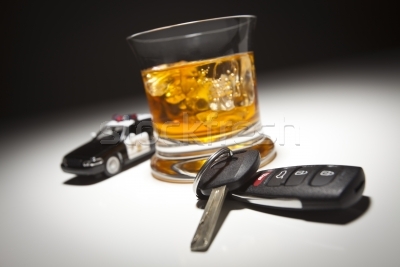Impaired driving is a serious offense. We’ve shared some general facts about DUI convictions before, and recently talked about how the consequences of drunk driving are becoming even stricter in certain locales.
It seems odd that in this day and age, with all the knowledge and statistics about the potential lethality of driving under the influence, people would still risk it.
According to Woods Law, data gathered by the NHTSA shows that in 2014 an average of one alcohol-impaired-driving fatality occurred every 53 minutes.
The data also shows that the most represented age group was young adults ranging from 21-24. A chilling fact that begs the question, why? Are they just careless? Is it possible that these younger drivers, many of whom are still novices, underestimate the impairing effect alcohol can have on their bodies?
The debilitating nature of alcohol is well studied. According to the CDC, at the legal limit (.08% in all states), individuals suffer from crippled reaction time, poor muscle coordination, and will have trouble concentrating, as well as a lack of balance, judgment, self-control, reasoning, perception, and information-processing. All highly counterproductive to efficiently drive a motor vehicle.
In younger adults, the effects are even more pronounced. Depending on body weight, it could take only a few alcoholic beverages to reach this point (you can check out more CDC stats on the effects of alcohol here). It’s easy to see then why .08% is the legal limit, and the reason why information about alcohol intake is one of the keys to helping prevent drunk driving incidents.
For younger adults especially, this means solid advice on learning to enjoy alcohol responsibly, and appropriately managing alcohol intake when engaging in festivities. For instance, before making the decision to drink, you should always know your personal limits and stick to those limits. You should not fall victim to pressure to drink excessively and, in turn, should not try to pressure anyone else to go beyond their limits.
Try to avoid drinking on an empty stomach. You should always take the opportunity to eat something beforehand to help mitigate the effects of alcohol (avoid foods that will make you thirsty, however, like salty snacks).
When at a party, bear in mind that the servings are likely going to be much more plentiful than the standard drinks one would get at a restaurant or bar. You should drink at a slow, steady pace (no guzzling), avoid doing rounds & shots, and avoid “posting up” and continuously drinking. Stay busy, move around, and punctuate your alcoholic beverages with water and soft drinks.
You should also take care not to fall prey to pernicious drinking myths, such as “drinking coffee will sober me up” and “only alcoholics cause accidents”. In truth, many alcohol related incidences are caused by occasional drinkers who just went overboard, not hardcore alcoholics.
If you know you’re going to be drinking, plan ahead. Don’t drink alone, have friends with you. Designate a driver, or make use of a car service so that you don’t have to worry about the temptation of stepping behind the wheel.
If you are the one hosting a get-together, you too can take measures to help improve everyone’s safety. Supply plenty of food and non-alcoholic drinks for guests to consume. Stop serving alcohol a couple of hours before your event ends, and help arrange for alternate modes of transport for guest who have clearly overindulged.
When push comes to shove, you may even have to take someone’s keys. It might lead to them getting upset, but if they do you’re likely making the correct choice.
If you are on the road, it’s important to play it safe. You should recognize some of the most common indicators that another motorist is drunk. These include swerving, drifting, straddling lane dividers, driving too fast or too slow, stopping erratically, slow response times, and wild turns. If you suspect a driver may be exhibiting these characteristics, you should keep your distance and alert the authorities.
DUIs are not to be taken lightly, but through a combination of education, and other smart strategies, it’s possible to combat the issue effectively, and at least severely limit the adverse effects of drinking and driving.
